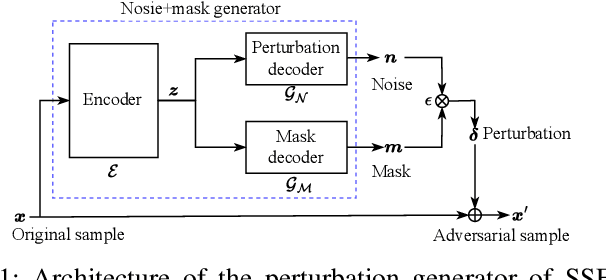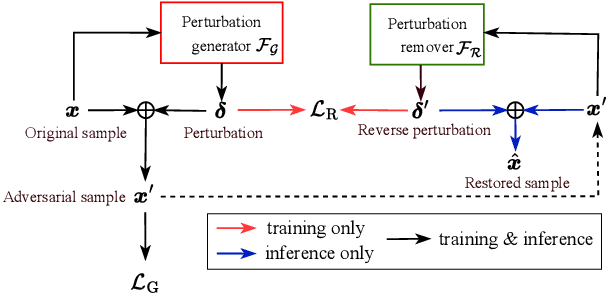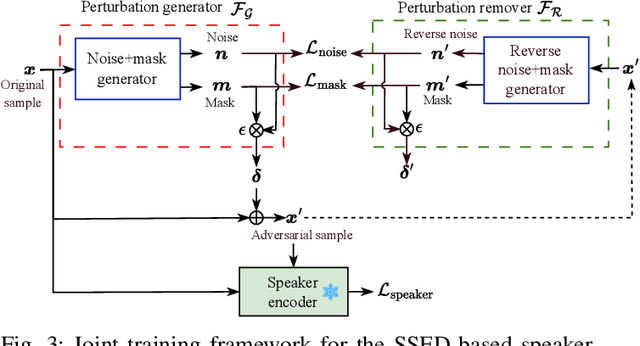Information Extraction
Information extraction is the process of automatically extracting structured information from unstructured text data.
Papers and Code
PRNet: Original Information Is All You Have
Oct 10, 2025Small object detection in aerial images suffers from severe information degradation during feature extraction due to limited pixel representations, where shallow spatial details fail to align effectively with semantic information, leading to frequent misses and false positives. Existing FPN-based methods attempt to mitigate these losses through post-processing enhancements, but the reconstructed details often deviate from the original image information, impeding their fusion with semantic content. To address this limitation, we propose PRNet, a real-time detection framework that prioritizes the preservation and efficient utilization of primitive shallow spatial features to enhance small object representations. PRNet achieves this via two modules:the Progressive Refinement Neck (PRN) for spatial-semantic alignment through backbone reuse and iterative refinement, and the Enhanced SliceSamp (ESSamp) for preserving shallow information during downsampling via optimized rearrangement and convolution. Extensive experiments on the VisDrone, AI-TOD, and UAVDT datasets demonstrate that PRNet outperforms state-of-the-art methods under comparable computational constraints, achieving superior accuracy-efficiency trade-offs.
UniFusion: Vision-Language Model as Unified Encoder in Image Generation
Oct 14, 2025



Although recent advances in visual generation have been remarkable, most existing architectures still depend on distinct encoders for images and text. This separation constrains diffusion models' ability to perform cross-modal reasoning and knowledge transfer. Prior attempts to bridge this gap often use the last layer information from VLM, employ multiple visual encoders, or train large unified models jointly for text and image generation, which demands substantial computational resources and large-scale data, limiting its accessibility.We present UniFusion, a diffusion-based generative model conditioned on a frozen large vision-language model (VLM) that serves as a unified multimodal encoder. At the core of UniFusion is the Layerwise Attention Pooling (LAP) mechanism that extracts both high level semantics and low level details from text and visual tokens of a frozen VLM to condition a diffusion generative model. We demonstrate that LAP outperforms other shallow fusion architectures on text-image alignment for generation and faithful transfer of visual information from VLM to the diffusion model which is key for editing. We propose VLM-Enabled Rewriting Injection with Flexibile Inference (VERIFI), which conditions a diffusion transformer (DiT) only on the text tokens generated by the VLM during in-model prompt rewriting. VERIFI combines the alignment of the conditioning distribution with the VLM's reasoning capabilities for increased capabilities and flexibility at inference. In addition, finetuning on editing task not only improves text-image alignment for generation, indicative of cross-modality knowledge transfer, but also exhibits tremendous generalization capabilities. Our model when trained on single image editing, zero-shot generalizes to multiple image references further motivating the unified encoder design of UniFusion.
I-DCCRN-VAE: An Improved Deep Representation Learning Framework for Complex VAE-based Single-channel Speech Enhancement
Oct 14, 2025Recently, a complex variational autoencoder (VAE)-based single-channel speech enhancement system based on the DCCRN architecture has been proposed. In this system, a noise suppression VAE (NSVAE) learns to extract clean speech representations from noisy speech using pretrained clean speech and noise VAEs with skip connections. In this paper, we improve DCCRN-VAE by incorporating three key modifications: 1) removing the skip connections in the pretrained VAEs to encourage more informative speech and noise latent representations; 2) using $\beta$-VAE in pretraining to better balance reconstruction and latent space regularization; and 3) a NSVAE generating both speech and noise latent representations. Experiments show that the proposed system achieves comparable performance as the DCCRN and DCCRN-VAE baselines on the matched DNS3 dataset but outperforms the baselines on mismatched datasets (WSJ0-QUT, Voicebank-DEMEND), demonstrating improved generalization ability. In addition, an ablation study shows that a similar performance can be achieved with classical fine-tuning instead of adversarial training, resulting in a simpler training pipeline.
Meta-Learning Based Few-Shot Graph-Level Anomaly Detection
Oct 09, 2025Graph-level anomaly detection aims to identify anomalous graphs or subgraphs within graph datasets, playing a vital role in various fields such as fraud detection, review classification, and biochemistry. While Graph Neural Networks (GNNs) have made significant progress in this domain, existing methods rely heavily on large amounts of labeled data, which is often unavailable in real-world scenarios. Additionally, few-shot anomaly detection methods based on GNNs are prone to noise interference, resulting in poor embedding quality and reduced model robustness. To address these challenges, we propose a novel meta-learning-based graph-level anomaly detection framework (MA-GAD), incorporating a graph compression module that reduces the graph size, mitigating noise interference while retaining essential node information. We also leverage meta-learning to extract meta-anomaly information from similar networks, enabling the learning of an initialization model that can rapidly adapt to new tasks with limited samples. This improves the anomaly detection performance on target graphs, and a bias network is used to enhance the distinction between anomalous and normal nodes. Our experimental results, based on four real-world biochemical datasets, demonstrate that MA-GAD outperforms existing state-of-the-art methods in graph-level anomaly detection under few-shot conditions. Experiments on both graph anomaly and subgraph anomaly detection tasks validate the framework's effectiveness on real-world datasets.
An End-to-End Room Geometry Constrained Depth Estimation Framework for Indoor Panorama Images
Oct 09, 2025Predicting spherical pixel depth from monocular $360^{\circ}$ indoor panoramas is critical for many vision applications. However, existing methods focus on pixel-level accuracy, causing oversmoothed room corners and noise sensitivity. In this paper, we propose a depth estimation framework based on room geometry constraints, which extracts room geometry information through layout prediction and integrates those information into the depth estimation process through background segmentation mechanism. At the model level, our framework comprises a shared feature encoder followed by task-specific decoders for layout estimation, depth estimation, and background segmentation. The shared encoder extracts multi-scale features, which are subsequently processed by individual decoders to generate initial predictions: a depth map, a room layout map, and a background segmentation map. Furthermore, our framework incorporates two strategies: a room geometry-based background depth resolving strategy and a background-segmentation-guided fusion mechanism. The proposed room-geometry-based background depth resolving strategy leverages the room layout and the depth decoder's output to generate the corresponding background depth map. Then, a background-segmentation-guided fusion strategy derives fusion weights for the background and coarse depth maps from the segmentation decoder's predictions. Extensive experimental results on the Stanford2D3D, Matterport3D and Structured3D datasets show that our proposed methods can achieve significantly superior performance than current open-source methods. Our code is available at https://github.com/emiyaning/RGCNet.
A Study of the Removability of Speaker-Adversarial Perturbations
Oct 10, 2025



Recent advancements in adversarial attacks have demonstrated their effectiveness in misleading speaker recognition models, making wrong predictions about speaker identities. On the other hand, defense techniques against speaker-adversarial attacks focus on reducing the effects of speaker-adversarial perturbations on speaker attribute extraction. These techniques do not seek to fully remove the perturbations and restore the original speech. To this end, this paper studies the removability of speaker-adversarial perturbations. Specifically, the investigation is conducted assuming various degrees of awareness of the perturbation generator across three scenarios: ignorant, semi-informed, and well-informed. Besides, we consider both the optimization-based and feedforward perturbation generation methods. Experiments conducted on the LibriSpeech dataset demonstrated that: 1) in the ignorant scenario, speaker-adversarial perturbations cannot be eliminated, although their impact on speaker attribute extraction is reduced, 2) in the semi-informed scenario, the speaker-adversarial perturbations cannot be fully removed, while those generated by the feedforward model can be considerably reduced, and 3) in the well-informed scenario, speaker-adversarial perturbations are nearly eliminated, allowing for the restoration of the original speech. Audio samples can be found in https://voiceprivacy.github.io/Perturbation-Generation-Removal/.
Benchmarking Agentic Systems in Automated Scientific Information Extraction with ChemX
Oct 01, 2025



The emergence of agent-based systems represents a significant advancement in artificial intelligence, with growing applications in automated data extraction. However, chemical information extraction remains a formidable challenge due to the inherent heterogeneity of chemical data. Current agent-based approaches, both general-purpose and domain-specific, exhibit limited performance in this domain. To address this gap, we present ChemX, a comprehensive collection of 10 manually curated and domain-expert-validated datasets focusing on nanomaterials and small molecules. These datasets are designed to rigorously evaluate and enhance automated extraction methodologies in chemistry. To demonstrate their utility, we conduct an extensive benchmarking study comparing existing state-of-the-art agentic systems such as ChatGPT Agent and chemical-specific data extraction agents. Additionally, we introduce our own single-agent approach that enables precise control over document preprocessing prior to extraction. We further evaluate the performance of modern baselines, such as GPT-5 and GPT-5 Thinking, to compare their capabilities with agentic approaches. Our empirical findings reveal persistent challenges in chemical information extraction, particularly in processing domain-specific terminology, complex tabular and schematic representations, and context-dependent ambiguities. The ChemX benchmark serves as a critical resource for advancing automated information extraction in chemistry, challenging the generalization capabilities of existing methods, and providing valuable insights into effective evaluation strategies.
HySim-LLM: Embedding-Weighted Fine-Tuning Bounds and Manifold Denoising for Domain-Adapted LLMs
Oct 09, 2025The extraction and standardization of pharmacokinetic (PK) information from scientific literature remain significant challenges in computational pharmacology, which limits the reliability of data-driven models in drug development. Large language models (LLMs) have achieved remarkable progress in text understanding and reasoning, yet their adaptation to structured biomedical data, such as PK tables, remains constrained by heterogeneity, noise, and domain shift. To address these limitations, we propose HySim-LLM, a unified mathematical and computational framework that integrates embedding-weighted fine-tuning and manifold-aware denoising to enhance the robustness and interpretability of LLMs. We establish two theoretical results: (1) a similarity-weighted generalization bound that quantifies adaptation performance under embedding divergence, and (2) a manifold-based denoising guarantee that bounds loss contributions from noisy or off-manifold samples. These theorems provide a principled foundation for fine-tuning LLMs in structured biomedical settings. The framework offers a mathematically grounded pathway toward reliable and interpretable LLM adaptation for biomedical and data-intensive scientific domains.
A Semantics-Aware Hierarchical Self-Supervised Approach to Classification of Remote Sensing Images
Oct 06, 2025Deep learning has become increasingly important in remote sensing image classification due to its ability to extract semantic information from complex data. Classification tasks often include predefined label hierarchies that represent the semantic relationships among classes. However, these hierarchies are frequently overlooked, and most approaches focus only on fine-grained classification schemes. In this paper, we present a novel Semantics-Aware Hierarchical Consensus (SAHC) method for learning hierarchical features and relationships by integrating hierarchy-specific classification heads within a deep network architecture, each specialized in different degrees of class granularity. The proposed approach employs trainable hierarchy matrices, which guide the network through the learning of the hierarchical structure in a self-supervised manner. Furthermore, we introduce a hierarchical consensus mechanism to ensure consistent probability distributions across different hierarchical levels. This mechanism acts as a weighted ensemble being able to effectively leverage the inherent structure of the hierarchical classification task. The proposed SAHC method is evaluated on three benchmark datasets with different degrees of hierarchical complexity on different tasks, using distinct backbone architectures to effectively emphasize its adaptability. Experimental results show both the effectiveness of the proposed approach in guiding network learning and the robustness of the hierarchical consensus for remote sensing image classification tasks.
HTMformer: Hybrid Time and Multivariate Transformer for Time Series Forecasting
Oct 08, 2025Transformer-based methods have achieved impressive results in time series forecasting. However, existing Transformers still exhibit limitations in sequence modeling as they tend to overemphasize temporal dependencies. This incurs additional computational overhead without yielding corresponding performance gains. We find that the performance of Transformers is highly dependent on the embedding method used to learn effective representations. To address this issue, we extract multivariate features to augment the effective information captured in the embedding layer, yielding multidimensional embeddings that convey richer and more meaningful sequence representations. These representations enable Transformer-based forecasters to better understand the series. Specifically, we introduce Hybrid Temporal and Multivariate Embeddings (HTME). The HTME extractor integrates a lightweight temporal feature extraction module with a carefully designed multivariate feature extraction module to provide complementary features, thereby achieving a balance between model complexity and performance. By combining HTME with the Transformer architecture, we present HTMformer, leveraging the enhanced feature extraction capability of the HTME extractor to build a lightweight forecaster. Experiments conducted on eight real-world datasets demonstrate that our approach outperforms existing baselines in both accuracy and efficiency.
 Add to Chrome
Add to Chrome Add to Firefox
Add to Firefox Add to Edge
Add to Edge